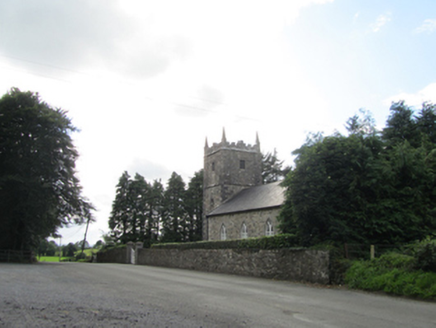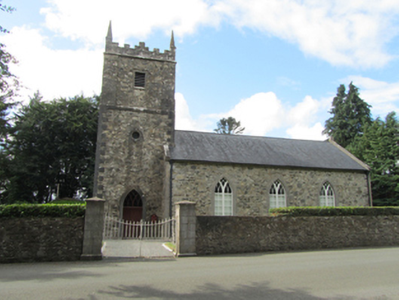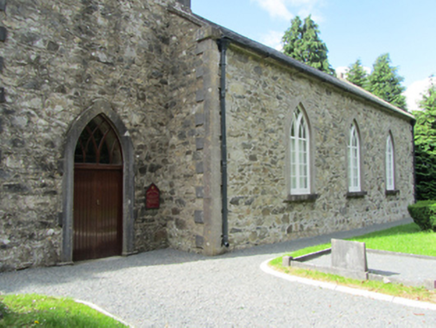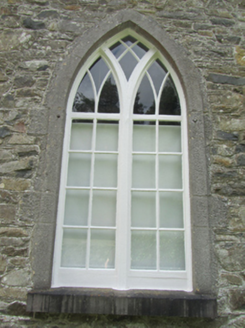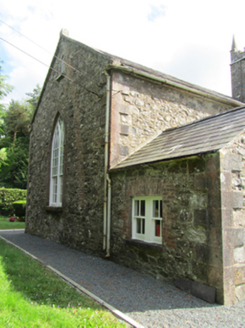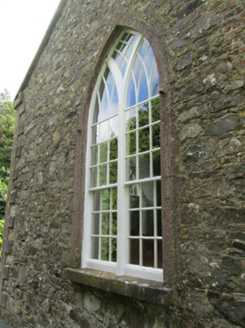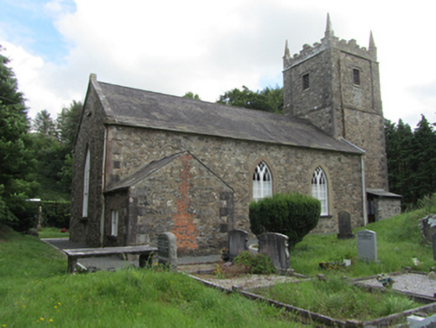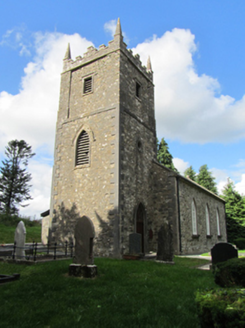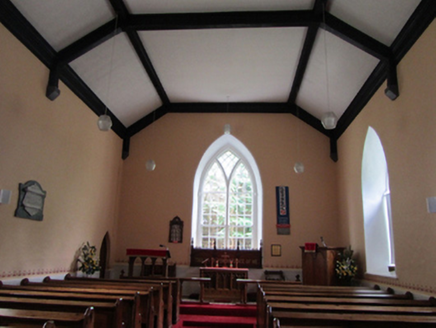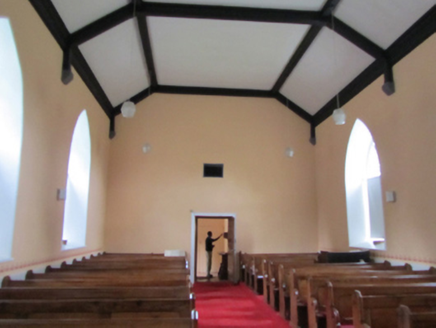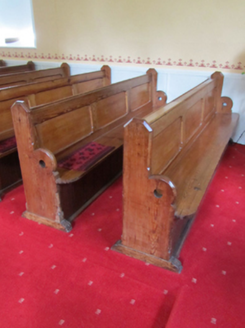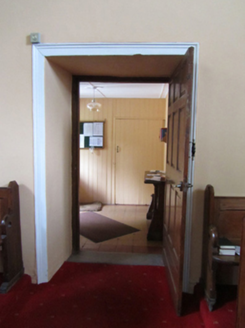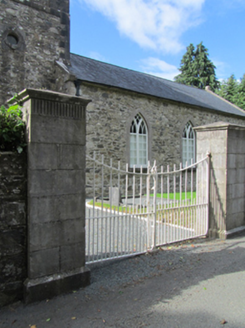Survey Data
Reg No
40403203
Rating
Regional
Categories of Special Interest
Architectural, Artistic, Social
Original Use
Church/chapel
In Use As
Church/chapel
Date
1810 - 1815
Coordinates
245787, 291609
Date Recorded
27/07/2012
Date Updated
--/--/--
Description
Freestanding hall-and-tower Church of Ireland church, built 1812, having three-bay nave, three-stage entrance tower to south-west, vestry to north-east. Pitched slate roof, clay ridge tiles, barge stones with kneelers, cast-iron rainwater goods. Crenellated stone parapet and corner pinnacles to tower. Random rubble stone walls, formerly rendered, with raised block-and-start quoins to nave and vestry. Upper stage of tower with string courses and corner pilasters, block-and-start quoins to lower stages. Square-headed louvred openings to upper belfry, stone dressed oculus to middle stage above dressed pointed arch to entrance. Pointed arch louvred opening with hood profile to middle stage of south-west elevation. Twin-light multiple-pane timber sash windows to nave with switch-line tracery heads and raised dressed stone surrounds and stone sills. Bipartite timber two-over-two sash window to vestry. Timber sheeted doors, glazed timber fanlight with tracery above tower entrance door. Interior with trussed roof structure resting on stone corbels in side walls. Timber sheeted door in pointed arch opening to vestry. Decorative tile to floor in sanctuary area. Timber pews, lectern, pulpit, altar, and altar rails. Graveyard to site with rubble stone boundary walls flanking double-leaf wrought-iron gates in ashlar square-profile piers having bevelled plinths, fluted friezes, and shallow pyramidal caps.
Appraisal
A country church in a picturesque setting originally built with a loan from the Board of First Fruits. The church retains its historic form and much of its original materials and features with a distinctive tower and well preserved timber windows along with interior furnishings. It is well proportioned and composed and set in a visible position alongside the road. A substantial rectory and grounds are located opposite to the east, which form an ecclesiastical ensemble of high aesthetic quality. The church, graveyard, and entrance make a positive contribution to the historic character of the surrounding area.
